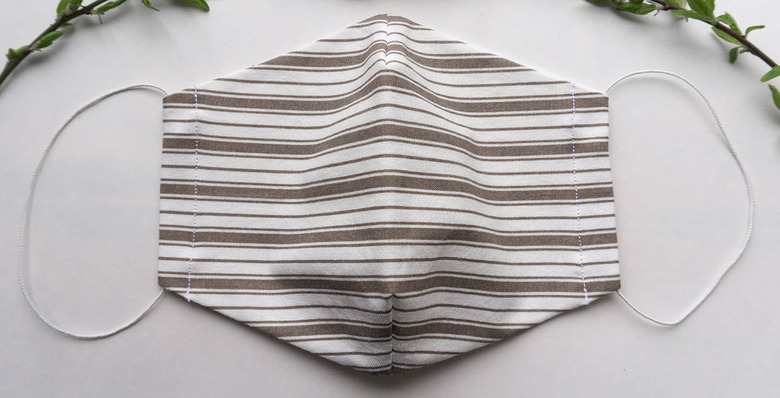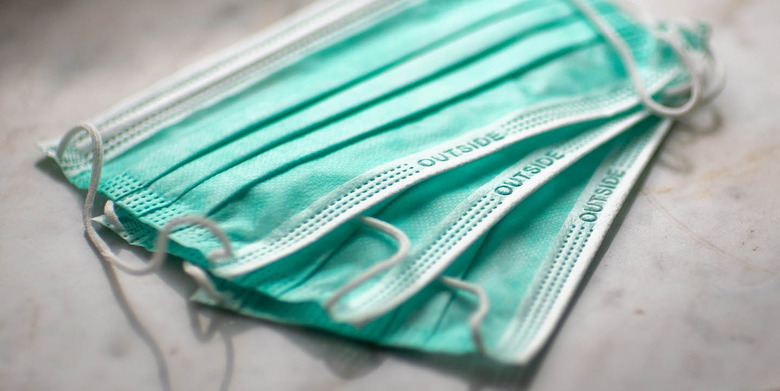Risky and useless DIY face masks: The studies you need to know about
Controversy and misinformation aside, it is clear at this point that face masks are a vital step toward reducing the community spread of COVID-19, the respiratory disease caused by the novel coronavirus. The disease remains widespread in the United States and select other countries, ones where many people are turning to reusable and homemade face masks as an alternative to more expensive and harder to find disposable medical masks.READ: The Face Mask Exempt Card con and the group behind it
The relative lack of studies on DIY face masks spurred arguments and speculation about how effective these products are and which materials are best. Some critics even claimed that all homemade and reusable face masks are pointless.
In the past couple of months, however, we've seen a number of proper studies from academic institutions drop that investigate different commonly available materials, as well as face mask designs and more to determine which are ideal...and which should be avoided in favor of a better, safer option. Here's what we know.
Some materials are better than others
It goes without saying that some materials are better than others, particularly when it comes to safeguarding against this particular virus. The top-tier masks used during aerosolizing procedures — known as N95 masks — are still the best at protecting both the wearer and others who are nearby. These masks are more importantly used by certain healthcare professionals than the public, however, and remain in short supply, meaning it is ideal for consumers to turn to more commonly available options.
Surgical masks, as further detailed below, are the next step in protection, offering extensive filtering of droplets when coughing, sneezing, or even just talking compared to reusable fabric-based alternatives. These masks may be difficult to find or too expensive for people, however, driving them to reusable masks, ones often made at home but also available to purchase online.
In this case, studies have implicated tightly-woven cotton fabric as the best material for washable, reusable face masks, but only if at least two layers of the material are used. In contrast, stretchy materials like the kind used in some neck-fitting balaclavas were found to potentially break up droplet particles, aiding their dispersal into the air and making it easier for the wearer to inhale them.
While some face mask designs are riskier and less useful than others, most of them still offer better protection than no mask at all.
Design and fit matters
In early July, researchers with Florida Atlantic University published a study that detailed their investigation of several different styles of face masks, including fitted masks like N95 and 'cones,' as well as loose-fitting masks like bandanas, balaclavas, and other semi-fit masks like paper-grade medical masks and folded rectangular fabric masks.
The results were about what you'd expect. Properly fitting masks, including homemade masks, were more capable of reducing the spread of droplets and decreasing the number of droplets the wearer was exposed to. In comparison, loose-fitting masks like bandanas and loose-fold masks over the face were less capable of reducing droplets.

br>
When it came to homemade masks, the 'cone'-style masks — which have a vertical seam and protrude slightly outward — often had a better fit and were, therefore, better able to reduce droplet spread. This benefit was amplified in masks that were made with multiple layers of a quilted material compared to masks that featured only a single fabric layer.
Bandanas were more capable of reducing droplet spread compared to loose-fold rectangular masks, but both performed more poorly than fitted masks. The study found that these types of loose masks were only able to reduce droplet spread distance by as little as 1/8th compared to fitted masks.
Some masks have better alternatives
As detailed above, not all masks are as capable of reducing droplet spread as well as others. This includes certain styles of masks, such as fabric loose-fold rectangular masks that are often poorly fit, as well as masks constructed with only a single thin layer of fabric. These masks are certainly better than not wearing a mask, but the poor fit and thin material make them far less ideal when compared to a similarly available and inexpensive, cone-style fitted mask made of two or more fabric layers.

br>
The surgical-variety of folded face masks featuring a built-in piece of metal for shaping the mask to the user's nose appears to be an exception to the folded-mask findings, however, based on the overall body of research. Various 'sneeze tests' have found that these surgical masks, when worn properly, can filter more droplets than two-layer cotton fabric masks. These surgical masks are still difficult to purchase in some places, however, due to shortages experienced at healthcare facilities.
Beyond that, one particular type of fabric may be less helpful than others — the stretchy kind. The latest study on this topic found that while cotton is pretty good at slowing down and reducing droplet spread, stretchy materials may actually cause trapped droplets to break up into smaller droplets, allowing them to disperse into the air and put others nearby at risk. Based on these findings, it may be ideal to avoid stretchy non-cotton reusable masks altogether.
Why masks matter
Misunderstandings and general ignorance around the purpose of face masks is still running rampant months after the pandemic declaration. Put simply, the mask is not meant to prevent COVID-19, but rather to reduce your odds of spreading it to other people. When everyone wears a mask, everyone benefits from this reduced risk.
Face masks are intended to serve as a barrier to how far droplets can spread through the air and how large of droplets are able to disperse. If someone sneezes or coughs while wearing a face mask, for example, the material prevents some droplets from passing through and slows down the ones that do get through the material, limiting how far they spread across the environment.
Wrap-up
Many types of face masks exist and most masks are better than nothing. With that said, studies have clearly demonstrated that some materials are better than others, offering more protection for those who wear them and those who are in the same vicinity as the wearer. Masks remain a key aspect of reducing the spread of the virus.
